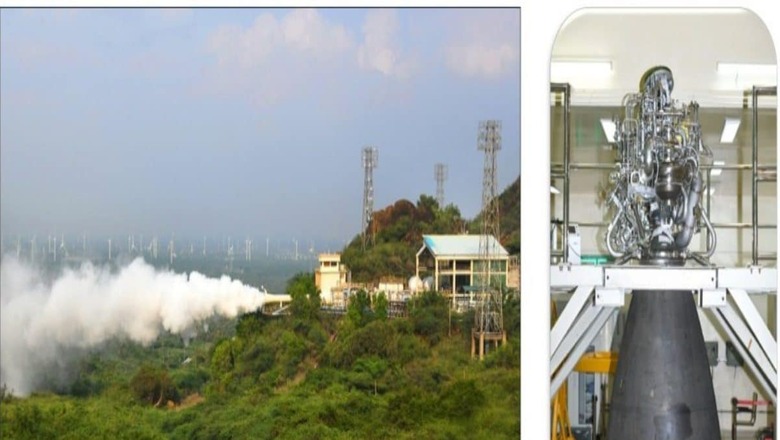
views
The Indian Space Research Organisation on Wednesday successfully completed a major milestone in the human rating of its CE20 cryogenic engine which powers the cryogenic stage of the human-rate LVM3 launch vehicle for its Gaganyaan missions, the space agency said.
The final round of the ground qualifications for the engine were completed on February 13, 2024.
Mission Gaganyaan:ISRO’s CE20 cryogenic engine is now human-rated for Gaganyaan missions.Rigorous testing demonstrates the engine’s mettle.
The CE20 engine identified for the first uncrewed flight LVM3 G1 also went through acceptance tests.https://t.co/qx4GGBgZPv pic.twitter.com/UHwEwMsLJK
— ISRO (@isro) February 21, 2024
“The seventh and the final test of the vacuum ignition tests were carried out at the High Altitude Test Facility at ISRO Propulsion Complex, Mahendragiri, to mimic the flight conditions,” ISRO said.
The space agency’s statement said that the ground qualification tests for the CE20 engine’s human rating involved life demonstration tests, endurance tests, and performance assessment under nominal operating conditions as well as off-nominal conditions w.r.t thrust, mixture ratio and propellant tax pressure.
All of the grand qualification tests of the CE20 cryogenic engine for India’s first manned mission, Gaganyaan programme, have now been successfully completed.
The space agency said that, “To achieve the human rating standards, four engines underwent 39 hot firing tests under various operating conditions for a cumulative time period of 8810 seconds against the minimum human rating qualification standard requirement, which is 6350 seconds.”
“ISRO has also successfully completed the acceptance tests of the flight engine identified for the first unmanned Gaganyaan (G1) mission tentatively scheduled for Q2 of 2024,” the statement read.
The CE20 cryogenic engine will power the upper stage of the human-rated LVM3 vehicle and has a thrust capability of 19 to 22 tonnes with a specific impulse of 442.5 seconds.
Earlier this month, Union Minister Jitendra Singh said that India’s woman robot astronaut, Vyommitra, will fly into space ahead of ISRO’s ambitious ‘Gaganyaan’ mission.
According to the Union Minister of State (Independent Charge) Science and Technology, the uncrewed Vyommitra Mission is scheduled for the third quarter of this year, while the manned mission Gaganyaan—- the country’s first manned space flight carrying Indian astronauts– is scheduled to be launched in 2025.
In October last year, the Gaganyaan mission’s unmanned test flight, TV-D1, successfully took off from the launch pad in Andhra Pradesh’s Sriharikota.
The brief test flight sequence launched the crew escape system and crew module at an altitude of 17 km. The test flight made a safe touchdown in the sea, about 10 km from Sriharikota in the Bay of Bengal.
The unmanned flight tests were scheduled to demonstrate the performance of the crew module escape system.
The Gaganyaan project envisages a demonstration of human space capabilities by launching a crew of astronauts into an orbit of 400 kilometres and then bringing back these human astronauts safely to earth by landing them in India’s sea waters.




















Comments
0 comment